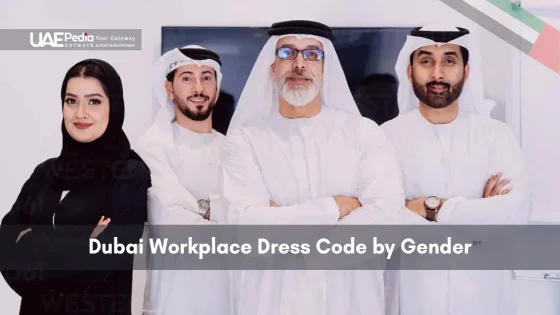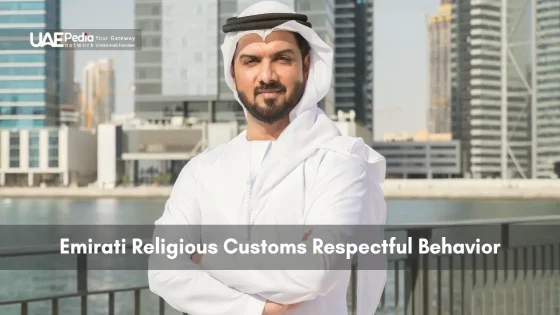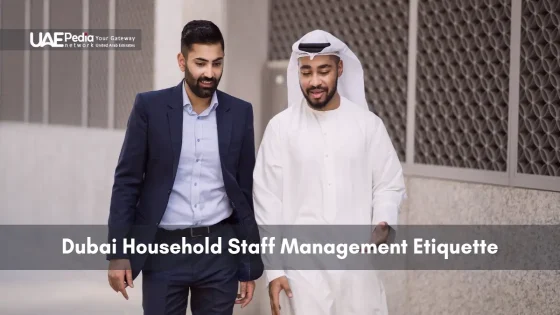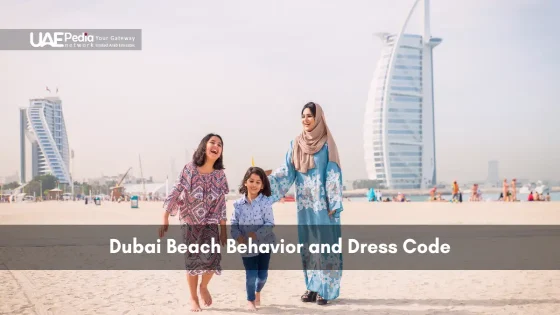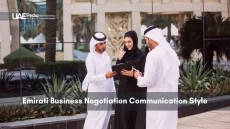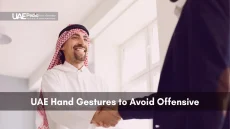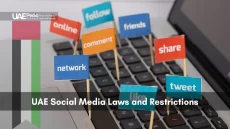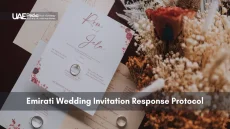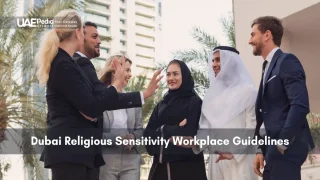Did you know 85% of professionals in one of the world’s most dynamic cities come from abroad? This melting pot of cultures creates a fascinating blend of modern ambition and traditional values—especially when it comes to clothing choices in office settings.
Understanding local expectations isn’t about sacrificing personal style. It’s about harmonizing self-expression with cultural awareness. Whether you’re attending meetings or exploring weekend markets, what you wear sends a message—and getting it right builds trust.
In this cosmopolitan environment, seasonal events and daily interactions alike call for thoughtful wardrobe decisions. For women, lightweight fabrics that offer coverage strike a balance between comfort and respect. Men often opt for tailored looks that stay cool under the desert sun while maintaining professionalism.
We’ll walk through practical tips for adapting your closet to this unique setting—without losing your signature flair. From sleeve lengths to fabric choices, you’ll learn how to thrive in both boardrooms and casual networking spaces.
Dress codes in UAE workplaces are governed by a synthesis of Islamic modesty norms, Bedouin heritage, and international business etiquette. Men typically wear lightweight, full-length suits or thobes in neutral tones; women select knee-length or longer garments that cover shoulders, décolletage, and knees, using breathable fabrics such as linen, cotton blends, or crepe. Climate adaptation is critical: fabrics should be UPF-rated, moisture-wicking, and unlined to maintain thermal comfort in ambient temperatures of 28–42 °C. Color palettes favor muted neutrals with restrained accent tones; patterns are limited to micro-scale or accessories.
Legal exposure is minimal—no federal statute prescribes office attire—but reputational risk arises from non-compliance with unwritten cultural standards. Enforcement is peer-driven: visible non-adherence can impede client rapport and advancement. Best practice is to mirror senior local staff, layer garments for modular formality, and carry a lightweight jacket or scarf for mosque visits, government premises, or Ramadan observance. Footwear must be closed-toe in formal contexts; ventilated leather or perforated designs mitigate heat stress.
Key Takeaways:
- Harmonize personal style with cultural norms.
- Opt for breathable fabrics to stay cool.
- Maintain shoulder and knee coverage always.
- Layer modest pieces for polished professionalism.
- Select tailored silhouettes for confident impressions.
- Adapt outfits seamlessly for varied events.
Understanding Dubai’s Cultural Norms in the Professional Environment
Imagine stepping into a bustling office tower where tailored suits meet flowing kanduras—a visual harmony of old and new. Here, professional style isn’t just about trends. It’s a dance between honoring heritage and embracing global business rhythms.
Tradition Meets Tailored Collars
Local customs shape expectations subtly. While sleek modern offices dominate the skyline, many professionals blend Western cuts with modest touches—think knee-length skirts over bold patterns, or crisp shirts paired with lightweight blazers. One expat shared: “Wearing sleeves in meetings felt restrictive at first—until I realized it signaled respect for colleagues’ values.”
This city’s rich cultural heritage influences even casual work environments. Friday brunches might swap ties for smart polo shirts, but beachwear stays firmly vacation-bound. For men, well-fitted suits often replace the traditional dishdasha during international negotiations—a nod to both comfort and cross-cultural fluency.
The Unspoken Rules of Professional Respect
Norms here prioritize collective harmony over individual expression. Sheer fabrics or short hemlines rarely appear, even in creative fields. Why? As a local HR manager explained: “We read clothing like a handshake—it should say ‘I see you’ before ‘Look at me’.”
Newcomers thrive by observing these quiet codes. In shared workspaces, you’ll notice collared shirts dominate casual Fridays. Networking events favor tailored jumpsuits over cocktail dresses. It’s not about rigid rules—it’s understanding that in this sun-baked business hub, your outfit speaks before you do.
Professional style in Dubai is a delicate balance between honoring heritage and embracing global business rhythms Ref.: “Ascots & Chapels. (2025). The UAE’s Evolving Workplace Dress Code.”
Dubai Workplace Dress Code by Gender: Key Considerations for Men and Women
Ever wondered how cultural norms shape what professionals wear in a global hub? In this cosmopolitan setting, daily wardrobe decisions often reflect deeper values—especially when balancing individual expression with collective expectations.
Comparing Expectations in a Predominantly Male Society
With men comprising over 75% of the workforce here, clothing often leans toward conservative cuts. Men typically follow straightforward guidelines—think crisp suits in breathable fabrics. Women, however, navigate layered considerations. A local HR consultant noted: “A knee-length dress might work elsewhere, but here, pairing it with sleeves shows awareness.”
Traditional values influence these distinctions. While men’s attire focuses on clean lines, women’s choices often prioritize coverage without sacrificing modernity. Flowy midi skirts or structured blazers become versatile tools for blending in while standing out.
Men comprise over 75% of the workforce, significantly influencing professional dress expectations Ref.: “Ask.com. (2025). Dressing for Success in Dubai: Tips for Business Attire in the City.”
Balancing Professionalism and Cultural Respect
Success here means reading the room—literally. Linen blazers replace tank tops during summer meetings. Men swap wool suits for cotton-linen blends that honor both climate and decorum. As one expat designer shared: “My bold prints spark conversations, but I always layer them thoughtfully.”
Every choice sends signals. Opting for loose silhouettes over bodycon styles demonstrates cultural fluency. Neutral palettes with pops of color strike that sweet spot between personality and polish.
Ultimately, thriving in this environment isn’t about strict rules. It’s about crafting a wardrobe that whispers “I belong here” while shouting your unique strengths. The United Arab Emirates’ blend of tradition and innovation invites professionals to dress with intention—one tailored stitch at a time.
Read More:
Professional Attire for Men: Guidelines for Success
What if your wardrobe could keep you cool under desert sunbeams and command boardroom respect? In the United Arab Emirates, mastering this balance unlocks professional credibility. Let’s unpack how to blend timeless tailoring with climate-smart choices.
Choosing Suits, Shirts, and Trousers for a Conservative Yet Modern Look
Start with a crisp white shirt—your blank canvas. Pair it with a slim-fit suit in navy or charcoal. Avoid flashy patterns; subtle pinstripes add flair without shouting. A local tailor advises: “Leave room for movement—snug collars scream discomfort, not confidence.”
Traditional cultural norms favor longer jackets that graze mid-thigh. Modern twists? Try unlined blazers in breathable wool blends. For trousers, opt for flat fronts over pleats—they’re sleeker in 40°C heat.
| Traditional Elements | Modern Adaptations | Climate Hack |
|---|---|---|
| Full-length sleeves | Linen-cotton blends | UPF 50+ fabric |
| Neutral tones | Monochromatic layers | Moisture-wicking linings |
| Leather loafers | Ventilated dress sneakers | Anti-odor insoles |
Adapting to the Climate with Stylish, Lightweight Options
Swap wool suits for tropical-weight fabrics—think 220-gram linen or seersucker. Roll up sleeves strategically during outdoor networking events. Pro tip: Carry a pocket square to dab sweat discreetly.
Footwear matters. Patent leather overheats; opt for perforated oxfords instead. Match belts to shoes—a mismatched pair screams “tourist.” Remember: In Arab Emirates culture, polished details signal respect for colleagues and clients alike.
Men’s professional attire should prioritize breathable fabrics and tailored fits that respect local climate and cultural expectations Ref.: “Aeontrisl. (2024). What to Wear in Dubai: Office to Outdoor Dress Codes Explained.”
Essential Workplace Outfit Guidelines for Women in Dubai
Ever noticed how a perfectly tailored blazer can whisper confidence while honoring tradition? In this crossroad of cultures, professional women craft wardrobes that balance flair with cultural awareness—proving style and respect aren’t mutually exclusive.
Modesty Meets Modernity: Navigating Dress Codes for Women
Think flowing maxi dresses with structured belts. Or wide-leg trousers paired with crisp, elbow-sleeve blouses. A fashion blogger here shared: “My silk scarves add color while covering collarbones during client pitches—it’s like wearable diplomacy.”
| Must-Cover Areas | Stylish Solutions | Climate-Friendly Fabrics |
|---|---|---|
| Shoulders | Knit boleros | Breathable linen |
| Knees | Midi pencil skirts | Stretch crepe |
| Midriff | High-waisted trousers | Moisture-wicking cotton |
Covering Shoulders, Skirts, and Other Key Details
Government guidelines emphasize discretion without dictating hemlines. Knee-length skirts work if paired with tights. Sleeveless tops? Layer them under lightweight blazers during office hours. For outdoor events, consider sun-safe UPF clothing that protects skin while looking polished.
Working in a Diverse Environment: Adapting to Varied Expectations
Local laws support women’s choices, but etiquette leans toward understated elegance. One CEO advised: “I wear bold prints to tech startups but choose neutral tones for government meetings—it’s about reading the room’s energy.”
Opportunities abound for those who blend innovation with tradition. Try belted abaya dresses over slim-fit pantsuits. Accessorize with statement necklaces that draw eyes upward. Here, your attire isn’t just clothing—it’s a conversation starter that says, “I respect your values, and I’ve got ideas worth hearing.”
Professional women can craft wardrobes that balance cultural awareness with personal style through strategic layering and modest cuts Ref.: “RemoFirst. (2024). UAE Business Culture: 10 Things You Need to Know.”
Navigating Legal, Etiquette, and Business Considerations
Picture this: a city where skyscrapers reflect centuries-old traditions in their glass facades. Here, blending legal savvy with personal flair isn’t just smart—it’s essential for thriving in professional circles. Let’s unpack how to honor local expectations while keeping your unique spark.
Understanding Dress Code Regulations and Cultural Laws
While no federal law dictates office attire, cultural norms carry weight. A legal advisor shared: “Your outfit becomes part of your professional reputation—like a silent business card.” Government buildings often require covered shoulders and knees, but private firms may offer flexibility. The key? Observe colleagues’ choices during your first week.
| Legal Musts | Cultural Nuances | Smart Adaptations |
|---|---|---|
| No sheer fabrics | Neutral tones preferred | Patterned scarves over basics |
| Avoid tight fits | Loose cuts signal respect | Tailored jumpsuits |
| Cover midriffs | Layering shows awareness | Lightweight cardigans |
Family values influence workplace interactions more than you’d expect. Opt for modest necklines during office events where colleagues’ relatives might attend. One marketing director noted: “I keep a pashmina in my bag—it transforms any outfit for unexpected meetings.”
Three quick tips for staying compliant yet confident:
- Choose breathable fabrics that drape (not cling)
- Save bold patterns for accessories
- When in doubt, mirror senior staff’s formality
Modern employment opportunities thrive when global professionals respect local sensibilities. Your wardrobe becomes a bridge—connecting innovation with tradition, one thoughtful outfit at a time.
Practical Tips for Adapting to Business Settings in Dubai
Picture a morning where your outfit shifts from boardroom-ready to rooftop-chic before sunset. Professionals here master this wardrobe agility daily. Let’s unpack how to glide between events while honoring cultural subtleties.
From Formal Meetings to Casual Work Events: What to Wear
Start with a neutral base. A consultant shared: “My charcoal suit jacket layers over silk shells for presentations—then comes off for coffee chats, revealing a patterned blouse underneath.” Breathable linen-blend trousers work for both investor pitches and after-work majlis gatherings.
| Event Type | Key Pieces | Cultural Nod |
|---|---|---|
| Client Negotiations | Tailored blazer + midi skirt | Closed-toe heels |
| Team Brainstorms | Collared shirt + slim slacks | Rolled sleeves post-introductions |
| Networking Mixers | Embellished tunic + dress pants | Subtle gold accents |
Integrating Local Norms with Global Business Practices
Blend international trends with regional preferences. Opt for earth tones over neon hues during government meetings. A tech founder advised: “I wear statement earrings with modest necklines—it says ‘innovative’ and ‘respectful’ in one glance.”
Three quick swaps build bridges:
- Replace sleeveless tops with elbow-length alternatives
- Choose flowy silhouettes over bodycon fits
- Pair modern cuts with traditional fabric textures
Language barriers dissolve when your attire speaks thoughtfully. Watch colleagues’ reactions during your first week—their smiles (or quick glances) often guide better than any handbook. Time your wardrobe transitions: structured looks for morning reviews, softer layers as daylight fades into social hours.
Embracing Future Trends: Final Insights on Dubai Workplace Attire
Imagine your closet evolving as fast as the skyline—where innovation meets tradition at every stitch. The art of professional styling here thrives on balancing customs with curiosity. As global trends reshape industries, trousers and skirts adapt: think tailored wide-leg silhouettes with breathable linings or midi dresses featuring subtle tech-inspired textures.
Younger professionals are redefining norms, pairing polished sneakers with structured blazers—a shift detailed in recent style analyses. Creative sectors embrace relaxed cuts, while finance retains crisp collars. The secret? Honor local values like covering knees and shoulders, but experiment with fabrics that whisper modernity.
Three ways to stay ahead:
- Rotate classic trousers with cropped, ankle-grazing designs
- Layer lightweight cardigans over sheath dresses for climate-smart versatility
- Choose shoes that blend comfort with sleek profiles—think matte leather loafers
Check out the below:
As customs evolve globally, expect hybrid styles: abaya-inspired jackets over jumpsuits, or embroidered cuffs on office shirts. Your wardrobe becomes your passport—respecting heritage while embracing tomorrow’s possibilities. Stay observant, stay bold, and let every outfit say: “I’m ready for what’s next.”
While some multinational companies allow it, covering shoulders is widely recommended to align with local customs. Opt for lightweight cardigans or tailored blazers for a polished look that respects cultural norms without sacrificing style.
High-quality, breathable fabrics like linen or moisture-wicking blends are key. Many workplaces accept collared shirts with dress trousers—just keep a tailored jacket handy for meetings. The kandura (traditional Emirati attire) is also respected in government roles.
Yes. Dress codes here blend professionalism with cultural sensitivity. Repeated violations might signal disrespect for local values, potentially impacting career growth—especially in client-facing or government-linked roles.
Knee-length or longer is safest. If wearing something shorter, pair it with opaque tights. Many female professionals choose midi dresses or wide-leg trousers for a chic, climate-appropriate look that navigates modesty expectations effortlessly.
Stick to neutral tones and subtle patterns for corporate settings. Save bold prints for creative industries or after-work events. Remember, understated elegance often makes the strongest statement in the UAE’s business culture.
Closed-toe shoes are preferred in conservative sectors. Sandals with straps work in casual offices if well-maintained. Pro tip: Keep heels under 3 inches for all-day comfort during souq-to-skyscraper days.
Free zones like DIFC often mirror global business casual norms, while government roles typically require formal national dress or conservative Western suits. Always check your company’s handbook—when in doubt, overdress for the first week and adjust accordingly.
